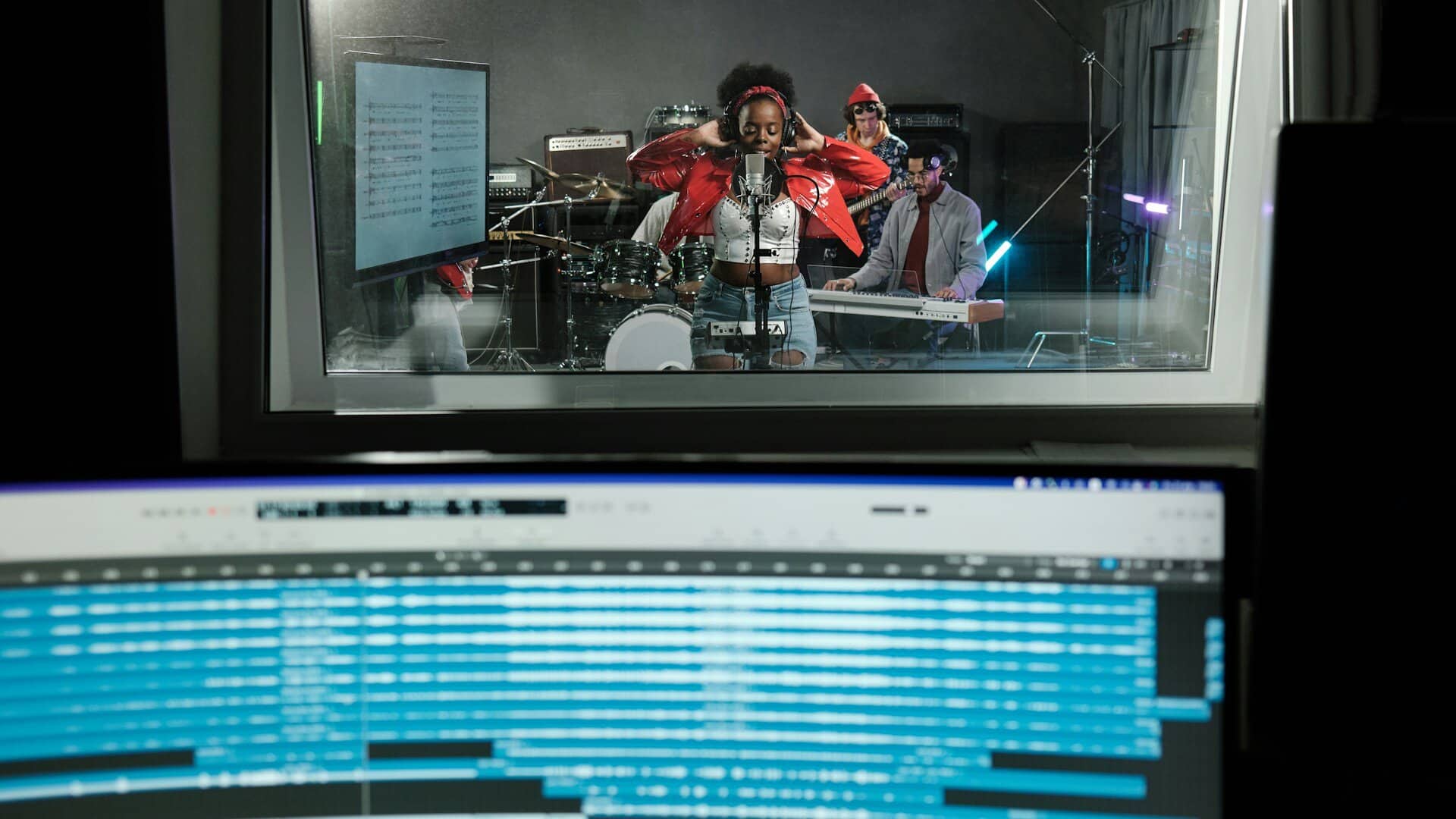Adding visual interest to your video doesn’t always come from flashy effects or high-end gear. Sometimes, it’s the subtle details in the scene that give your production a polished and professional look. Props used in a green screen studio can add that missing layer of realism that helps set the tone, style, and energy of your entire project. Whether it’s a chair, a backdrop item, or a simple object held by the talent, the right prop turns a flat shot into something your audience can actually connect with.
These supportive objects aren’t just window dressing. They help tell your story and create a better sense of space when the digital background is added later. Done right, they help guide the viewer’s eye, anchor characters in a believable setting, and make content feel more grounded even in a completely virtual environment. If you’re producing commercials, jingles, or radio-video packages, having the right physical elements goes a long way toward making your production feel less artificial and more relatable.
Types of Props That Enhance Video Quality
Props can take many forms, but the ones that work best in green screen productions fall into several common categories. Picking the right type helps bring more depth to your video and makes the final edit feel like it was shot in a real space.
Here are a few key types of props to consider:
1. Furniture pieces: Chairs, tables, stools, or shelves offer physical anchors. They keep your talent from feeling like they’re floating in front of a backdrop and help define the scale of your set.
2. Handheld items: Things your subject can hold or interact with, like coffee mugs, signs, or tools, make the performance more natural and engaging. They also help make your message more relatable.
3. Decorative accessories: Vases, picture frames, plants, or lighting fixtures bring style into the frame. Even small touches can add warmth and dimension that blends well with your virtual background.
4. Scene-specific objects: These are items that support the narrative of your content. If you’re doing a radio ad spot themed around a cozy studio, things like headphones, soundboards, and microphones set the mood and help sell the environment even when the real setting isn’t there.
Choosing the right prop depends on both the concept and the message you’re trying to get across. A green screen offers endless flexibility, but without the right physical hints for the viewer to latch onto, the illusion can sometimes fall flat. These simple additions keep your talent grounded and give your virtual backgrounds something to play off of so they don’t feel disconnected from the action.
Choosing the Right Props for Your Project
Once you’ve got a general sense of the prop types that work, the next step is picking the right ones for the look and feel you’re going for. It’s easy to go overboard, but it’s better to have one item that adds to the story than a whole set of unrelated ones that just fill space.
When you’re choosing props for your green screen shoot, ask yourself a few questions:
1. What setting does your final background suggest?
2. What time period or tone are you going for?
3. How can a prop help communicate mood without overwhelming the shot?
For example, if you’re producing a video jingle that mimics a retro radio booth, you don’t have to build the entire booth physically. Instead, focusing on key details like an old-school mic or a classic turntable can sell the entire vibe. These hints tie your subject to the digital backdrop and let the viewer’s imagination do the rest.
Finally, remember to take scale, material, and color into account. Avoid anything green or reflective because it may interfere with the chroma key process. Choosing lighter or matte finishes also helps prevent odd reflections or keying issues later during editing. Picking the right props up front saves time in post-production and keeps your shoot flowing smoothly.
Setting Up Props Effectively in a Green Screen Studio
Getting the right props is half the job. How you place them matters just as much. Poor prop placement can ruin the illusion you’re working hard to create, especially when working with a green screen. To get the most out of each prop, you’ll want to think about space, lighting, and perspective.
Place props so they support the scene without getting in the way of the talent. Keep walkways clear and give the subject room to move naturally. Too many props too close to the person on screen can create a cramped look and feel. Try to balance practical and visual needs so nothing feels off or forced on screen.
Another rule to follow is to avoid letting props cast strange shadows or reflect light back onto the green screen. Pay attention to lighting angles and the finish of each item. A shiny metal object or a high-gloss table might seem harmless, but even a touch of glare can make keying difficult during editing. Matte or muted surfaces reduce this risk and handle camera lights better.
To create a scene that feels real once the digital background is added, match the perspective of the virtual space. If your background has depth, but your props are placed flat against a wall or the screen, things won’t line up. Bend the space a little. Place some props closer to the camera and others farther back to mimic a natural layout. For example, a stool might sit off-center in the foreground, while a potted plant rests near the edge of the frame to suggest more depth.
Give the illusion of layers. Use foreground props for interaction, midground pieces for balance, and occasional background fillers to sell the environment. Staggering these placements makes your virtual world look more believable and keeps the viewer visually engaged.
Prop Rentals Through a Green Screen Studio Rental in Cincinnati
If you’re filming your project in Cincinnati, using a green screen studio that offers prop rentals is a real time saver. Working with a studio that stocks scene-ready items means you won’t have to source every item yourself or deal with hauling loads of gear across town. Those kinds of logistics eat into your shoot schedule fast.
A local green screen studio often carries props designed to work well under lights and in keying conditions. That means no surprises when you find out a piece looks great on set but causes tech issues later. Consistency like this helps you focus on performance and timing, not scrambling to fix visual problems in post.
There’s also value in being able to see the props before the shoot. This lets you plan ahead and imagine how they’ll fit with your digital backgrounds, scripts, or ad segments. For example, if you’re shooting a promo that combines a catchy radio jingle with on-screen talent, having access to broadcast-themed props nearby can help tie your brand’s message together.
When renting, watch for variety in categories. A good green screen studio rental in Cincinnati should offer functional items like chairs and small tables, plus style-based pieces for atmosphere like bookshelves, lamps, and wall art. Having prop options on-site gives you the tools to build your scene right then and there.
Make Your Green Screen Videos Stand Out
Small details can leave a big impression. When your scene feels balanced and believable, your audience is more likely to stay focused on your message. Whether you’re producing a catchy jingle video, a creative radio spot, or a product segment, the right props help shape how it’s received.
You’ve got creative control in a green screen studio. Use it. Make visual choices that support your vision and enhance your storytelling. Props are more than backdrop fillers, they guide emotion, movement, and mood. They help bring even the most digital-heavy scenes to life with just the right touch of reality.
If you’re working on a project and need support setting the stage with the right look, call Killerspots Agency at 513-270-2500. Their green screen studio rental in Cincinnati gives you access to gear and props that work hand-in-hand to bring your story into focus.
Ready to take your video production to the next level? Exploring a green screen studio rental in Cincinnati can give you the space, lighting, and flexibility to bring your visuals to life. Let Killerspots Agency help you create scroll-stopping content that connects with your audience. For more details or to chat about your next project, give us a call at 513-270-2500.








